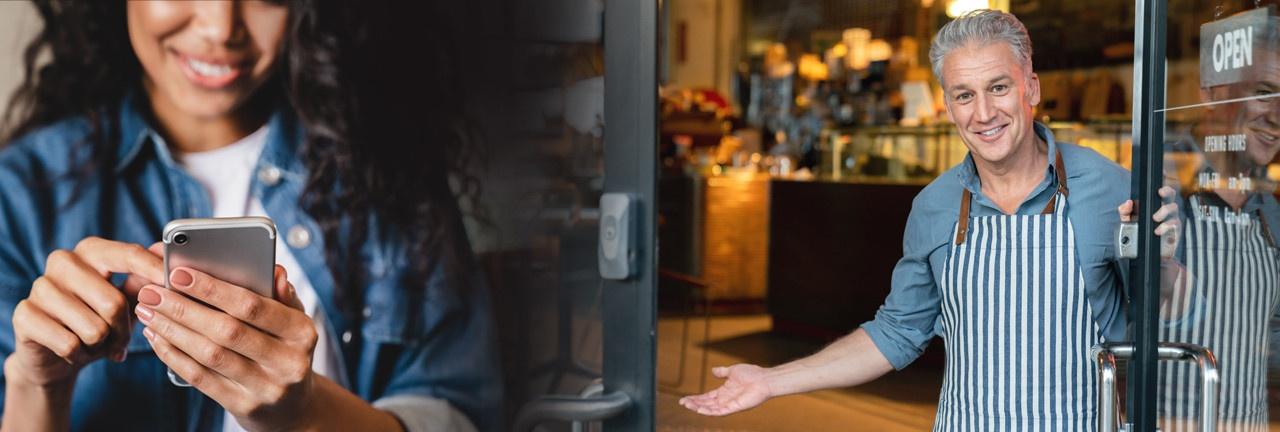Tomorrow’s shopping experience isn’t just coming… It might already be here
By way of contrast, value-based retailers will emphasise quantity and convenience, with little to no personalisation. For most of our day-to-day shopping, this model has proven itself many times over. When it comes to basic household goods, most of us are happy to make the shopping trip as quick as possible and will generally pick whatever brand is best value for money.
For many years, these two models have proven more than adequate for most of our shopping needs. But the growing ubiquity of online shopping has added a whole new element to the retail landscape. One-click purchases and next day delivery have now become deeply ingrained in our daily lives, to the extent they present a serious challenge to even the most well-established high street shops.
One of the critical factors here is the way online shopping has successfully automated all the bespoke touches that would previously have required personal attention from a shopping assistant. Consider what our dashboards look like when we long into Amazon, or similar sites and apps. The first thing we'll usually see is a long list of recommendations and special offers, based on our browsing and purchasing habits - all of which are already set up for near-effortless purchasing.
This model has developed, as the numerous apps we utilise in our daily lives become increasingly interconnected, with the sharing of data allowing adverts and special offers to be tailored around shoppers wider browsing habits, allowing for an even deeper level of customisation.
While some may view this shift as the beginning of the end for brick-and-mortar retailers, the truth is more complicated, not least because of changing circumstances across the country.
Throughout lockdown, online shopping was at an all-time high, while many high-street shops were forced to develop new ways of delivering their products and services, such as app-based shopping, expanding their online capabilities, and contact-free shops, such as those launched by Amazon. The public's shopping habits had fundamentally changed over the course of two years, and the retail sector evolved in response.
Since then, as the country prepares for a recession and utilities costs continue to rise, the public are naturally becoming more conscious of how they spend their money. Many of us already check our phones when considering an in-person purchase to see if the same product is less expensive online, which means high-street retailers are challenged more than ever to deliver competitive pricing.
It's clear, then, that the retail sector as a whole is going through a transformative period, from which a new type of shopping experience will emerge. In fact, we might already be seeing the first hints of what it will look like…
As we touched on above, many high-street retailers completely revamped the way they interact with their customers throughout lockdown. For the most part, those measures were reactive, in order to stay competitive throughout a challenging period for the entire sector. But two years on, how can the lessons learned and the innovations in both technology and service delivery be used proactively, to drive a higher standard of service and bring that elusive personal touch that has previously been the sole preserve of the most exclusive retailers to every shopping experience?
The introduction of smart cameras, digital signage, and shopping apps has opened the doors for high-street retailers to gather real-time data on their customers throughout each visit, all of which can be used to develop deeper, more accurate customer personas. Retailers can then tailor individual customers' shopping experiences by steering them towards their ideal products and providing them with bespoke special offers - before, during, and after their visit.
The extent to which this type of automation is required will very much depend on individual shops and their customers. For example, in large stores with higher daily footfall, such measures may not be practical or appropriate, while the local shops that are longstanding fixtures of their communities will continue to depend on the personal connections with their customers.
But let's take, for instance, a mid-level sports equipment shop…
When the customer arrives at the shop, the official app on their phone connects to the store WiFi and shares their recent browsing and purchase history. Based on this, it brings up a series of suggestions, all at 'specially discounted' prices that easily compete with what is available online. And one of these special offers just happens to include the specific trainers they were admiring that morning on a particular celebrity's Instagram account! As they're browsing the shelves, a sales assistant not only offers them a friendly greeting, but steers them towards the exact shoes they were looking at and is able to confirm on the spot that they're in stock, in their size.
All this is very much a work in progress. As with any new technology, establishing the full range of possibilities it can open up will take time, and require close collaboration between retailers and their technology partners. Furthermore, as we touched on above, in a changing economic climate, most of us are reconsidering our purchasing habits, which will also be a major consideration in the years ahead.
But even in this state of flux, we must remember that retail is inherently people-focused, and so the technologies and methodologies we've looked at here must be utilised in the service of the sector's lifeblood - incredible customer experiences.
Providing the technological foundation for true immersive experiences, across every channel, throughout every step of the customer journey.
Our Retail brochure offers a comprehensive overview of how we draw on a deep understanding of the sector's singular challenges, an evolving technology ecosystem, and a highly consultative approach to offer bespoke solutions that help staff deliver their best for every customer - both online and in person.
When you subscribe to the blog, we will send you an e-mail when there are new updates on the site so you wouldn't miss them.



